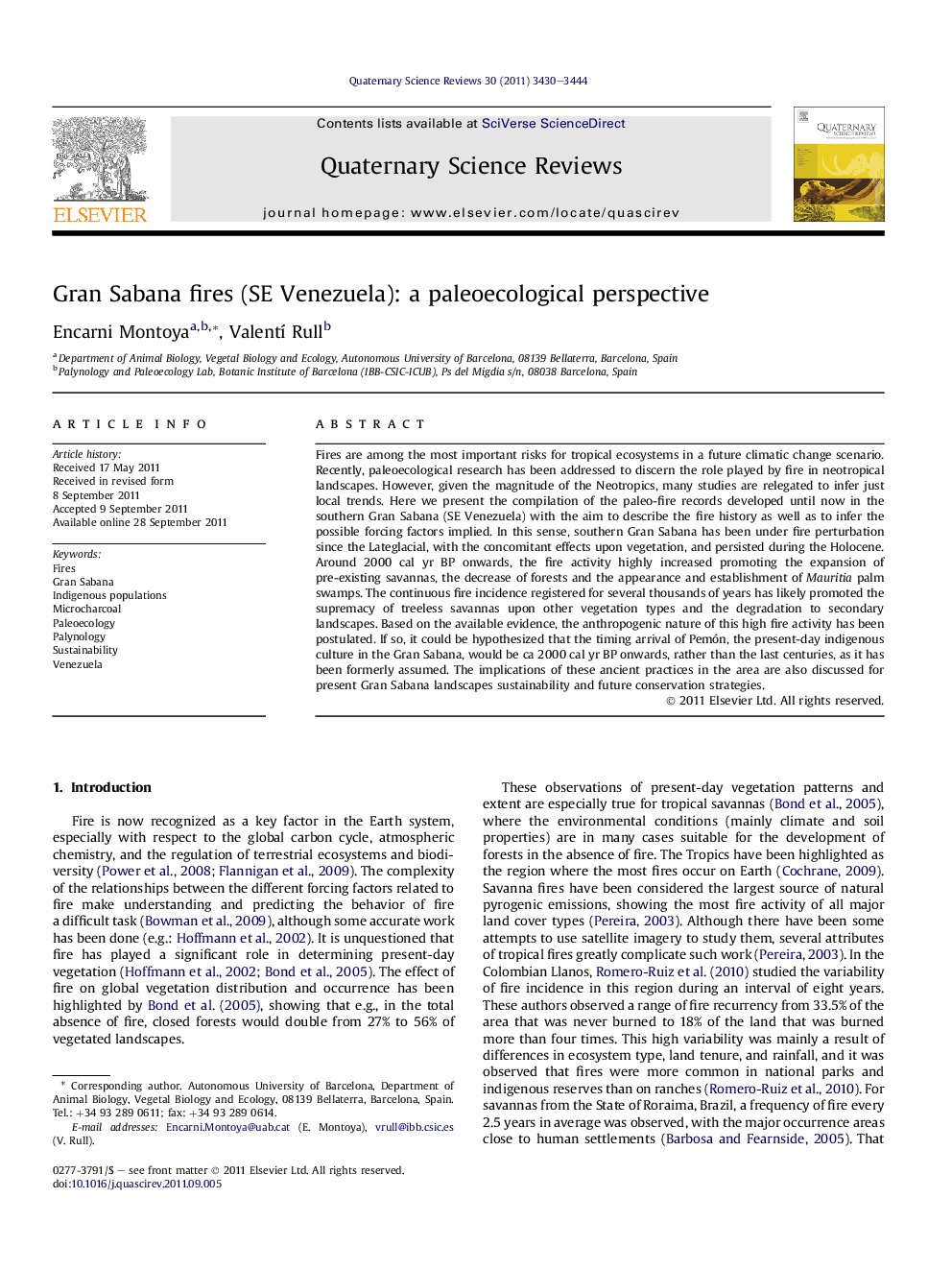| کد مقاله | کد نشریه | سال انتشار | مقاله انگلیسی | نسخه تمام متن |
|---|---|---|---|---|
| 4735830 | 1640906 | 2011 | 15 صفحه PDF | دانلود رایگان |

Fires are among the most important risks for tropical ecosystems in a future climatic change scenario. Recently, paleoecological research has been addressed to discern the role played by fire in neotropical landscapes. However, given the magnitude of the Neotropics, many studies are relegated to infer just local trends. Here we present the compilation of the paleo-fire records developed until now in the southern Gran Sabana (SE Venezuela) with the aim to describe the fire history as well as to infer the possible forcing factors implied. In this sense, southern Gran Sabana has been under fire perturbation since the Lateglacial, with the concomitant effects upon vegetation, and persisted during the Holocene. Around 2000 cal yr BP onwards, the fire activity highly increased promoting the expansion of pre-existing savannas, the decrease of forests and the appearance and establishment of Mauritia palm swamps. The continuous fire incidence registered for several thousands of years has likely promoted the supremacy of treeless savannas upon other vegetation types and the degradation to secondary landscapes. Based on the available evidence, the anthropogenic nature of this high fire activity has been postulated. If so, it could be hypothesized that the timing arrival of Pemón, the present-day indigenous culture in the Gran Sabana, would be ca 2000 cal yr BP onwards, rather than the last centuries, as it has been formerly assumed. The implications of these ancient practices in the area are also discussed for present Gran Sabana landscapes sustainability and future conservation strategies.
► We compile the paleo-fire records from southern Gran Sabana (SE Venezuela).
► Fire has been among the main drivers of southern Gran Sabana vegetation shifts.
► Fire has been recorded since the Lateglacial and peaked during last two millennia.
► The present Pemón culture likely arrived and expanded during the last 2000 years.
► The continuous fire occurrence has promoted the expansion of savannas and morichales.
Journal: Quaternary Science Reviews - Volume 30, Issues 23–24, November 2011, Pages 3430–3444